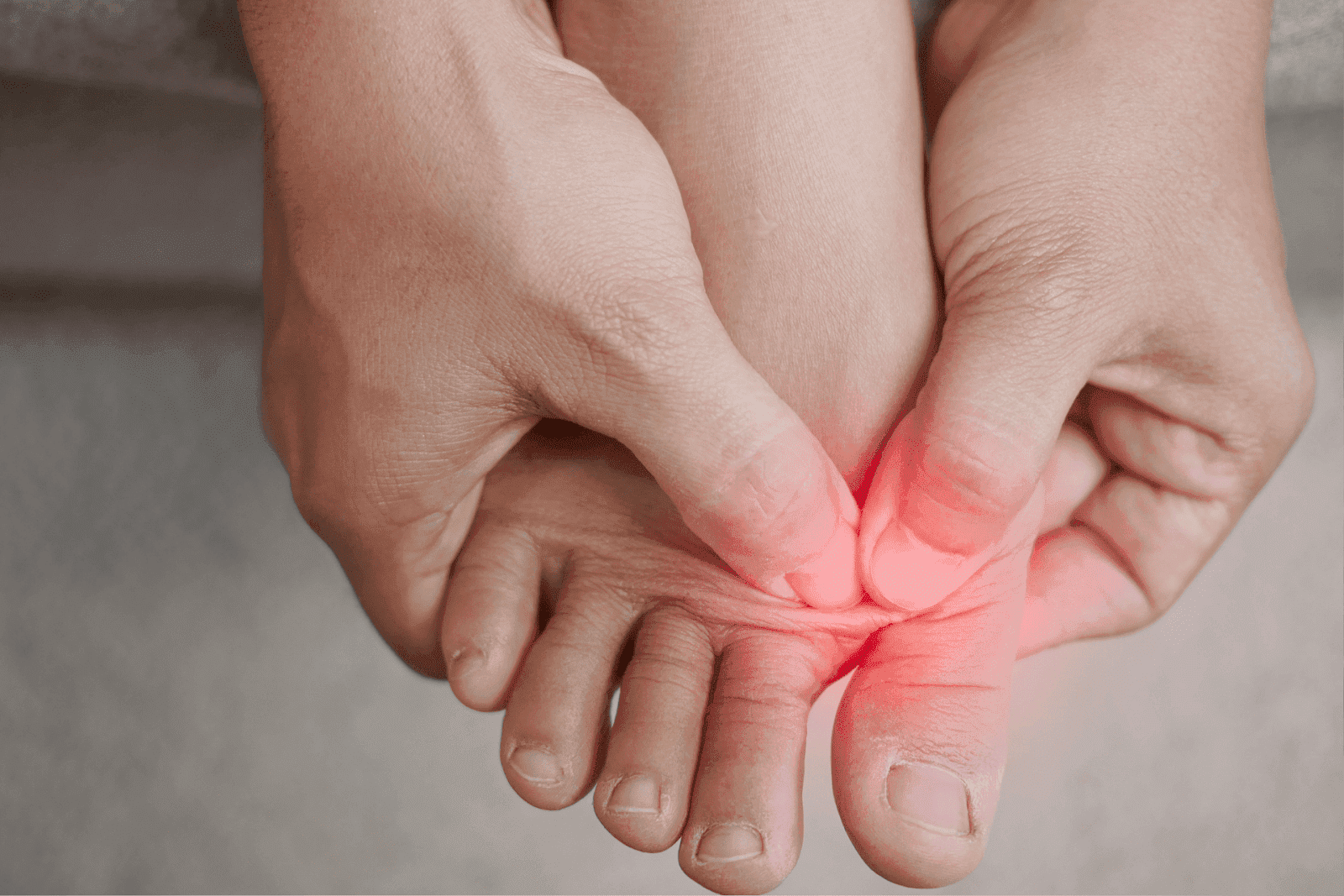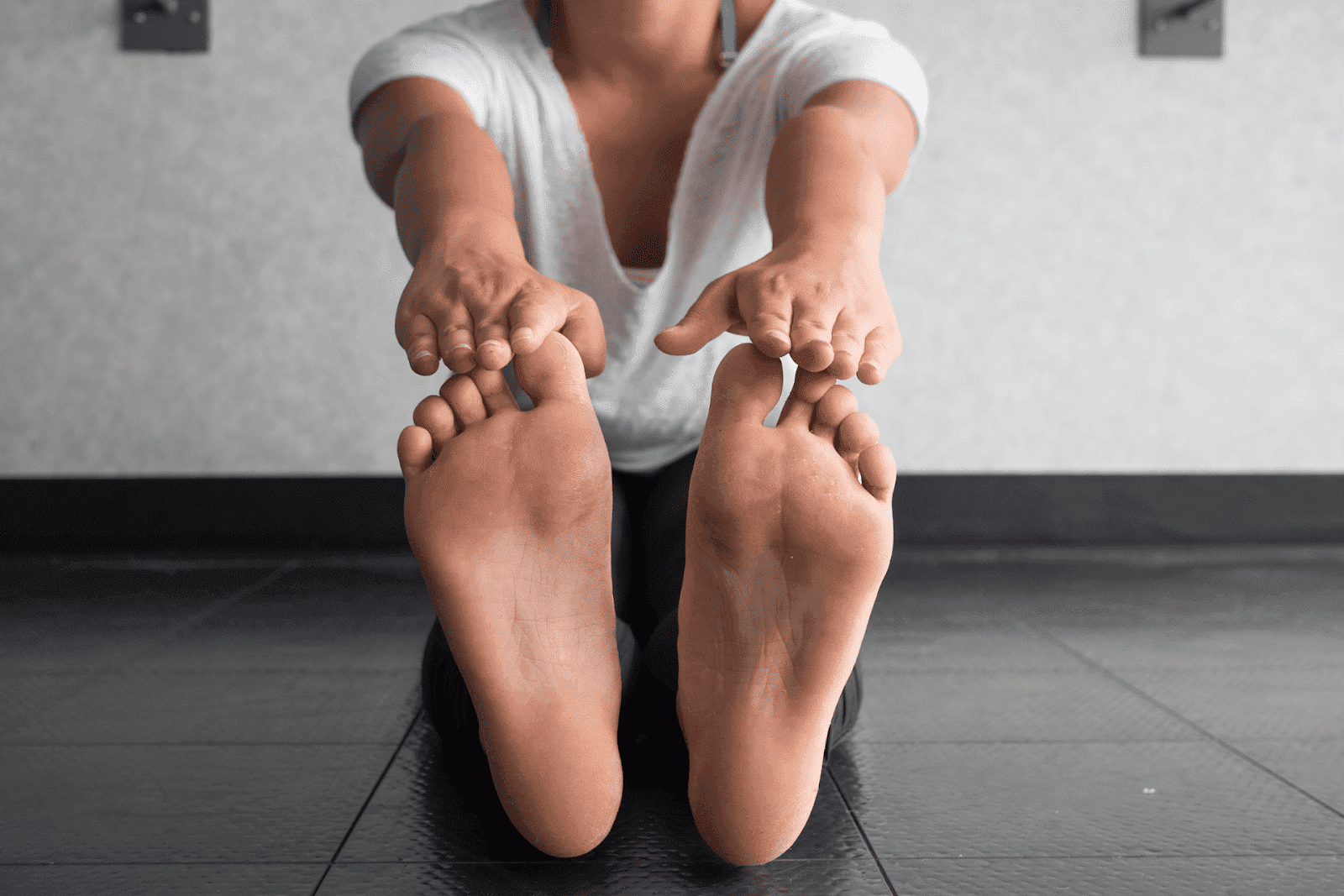What Causes Toe Cramps and How to Relieve Them
Toe cramps can strike suddenly, causing sharp pain and discomfort that disrupts daily activities or even sleep. While often harmless, frequent or severe toe cramps might [...]
Read More
Medically reviewed by Abhijit Bhattacharyya | MD, PhD, MBA, Tufts University School of Medicine - Miami, Florida on October 13th, 2025.
Toe cramps can strike suddenly, causing sharp pain and discomfort that disrupts daily activities or even sleep. While often harmless, frequent or severe toe cramps might signal underlying health issues that deserve attention. Understanding the common causes and effective relief methods can help you manage this condition better and improve your overall foot health.
Toe cramps are involuntary, painful contractions of the muscles in the toes. These spasms can last from a few seconds to several minutes and may cause the toes to curl or stiffen. Although toe cramps are common and usually harmless, they can be distressing and interfere with mobility or rest.
Muscle cramps occur when muscle fibers contract suddenly and fail to relax immediately. In the toes, this can be triggered by various factors ranging from dehydration to nerve issues. Recognizing the triggers is the first step toward effective management.
Several factors can contribute to the onset of toe cramps, including overexertion during physical activities, prolonged periods of sitting or standing, and even wearing ill-fitting shoes. Athletes, particularly runners and dancers, often report toe cramps due to the strain placed on their feet during intense workouts. Additionally, certain medical conditions, such as diabetes or thyroid disorders, can increase the likelihood of experiencing cramps. It’s essential to pay attention to your body’s signals and adjust your activities accordingly to minimize the risk of cramps.
Preventive measures can be quite effective in reducing the frequency of toe cramps. Staying well-hydrated, maintaining a balanced diet rich in electrolytes, and incorporating stretching exercises into your routine can help keep your muscles healthy and flexible. Some individuals find relief through gentle foot massages or using heat therapy to soothe tense muscles. Moreover, wearing supportive footwear that provides adequate arch support can significantly reduce the strain on your toes, helping to prevent those sudden, painful contractions from occurring.
 Common Causes of Toe Cramps
Common Causes of Toe CrampsExcessive walking, running, or standing for long periods can strain the small muscles in your feet and toes. This overuse may lead to cramping, especially if your footwear does not provide adequate support or if you suddenly increase your physical activity. For instance, athletes who ramp up their training schedules without proper conditioning often report increased incidences of cramps. Additionally, individuals who work in jobs that require prolonged standing, such as teachers or retail workers, may experience similar discomfort. It’s crucial to listen to your body and incorporate rest days and stretching exercises to mitigate these effects.
Muscle contractions depend heavily on electrolytes such as potassium, calcium, and magnesium. When your body is dehydrated or lacks these essential minerals, muscles are more prone to cramping. This is why toe cramps often occur after strenuous exercise or during hot weather when fluid loss is significant. Consuming a balanced diet rich in fruits and vegetables can help maintain proper electrolyte levels. Foods like bananas, spinach, and avocados are excellent sources of potassium, while dairy products provide calcium. Staying hydrated with water or electrolyte-rich drinks can also play a pivotal role in preventing cramps.
Reduced blood flow to the feet can cause muscle cramps. Conditions like peripheral artery disease or simply sitting in one position for too long can limit circulation, resulting in painful spasms in the toes. It's important to be mindful of your posture and take breaks to move around if you find yourself sitting for extended periods. Additionally, wearing tight shoes or socks can exacerbate circulation issues. Engaging in regular cardiovascular exercise, such as walking or cycling, can help improve blood flow to the extremities, potentially reducing the frequency of cramps.
Issues such as pinched nerves in the back or foot neuropathy can cause abnormal signals to the muscles, leading to cramps. Diabetes, for example, is a common cause of nerve damage that may manifest as toe cramps. Other conditions, such as sciatica or herniated discs, can also contribute to nerve compression. If you experience persistent cramps accompanied by tingling or numbness, it may be wise to consult a healthcare professional for a thorough evaluation. Early intervention can often prevent further complications and provide relief.
Certain medications, including diuretics and statins, may contribute to muscle cramps as a side effect. If you notice frequent toe cramps after starting a new medication, consult your healthcare provider. They may suggest adjustments to your dosage or explore alternative treatments. It’s also worth noting that some supplements, particularly those that alter electrolyte levels, can interact with medications and lead to cramping. Always inform your doctor about all the medications and supplements you are taking to ensure a comprehensive approach to your health.
Conditions like arthritis, hypothyroidism, or vitamin deficiencies can also cause muscle cramps. Identifying and treating the underlying condition is essential for long-term relief. For instance, individuals with hypothyroidism may experience muscle weakness and cramps due to hormonal imbalances. Similarly, vitamin D deficiency has been linked to muscle pain and cramps. Regular check-ups and blood tests can help detect these deficiencies early, allowing for timely intervention. Incorporating a well-rounded diet and appropriate supplements, under the guidance of a healthcare professional, can significantly improve muscle function and reduce cramping episodes.
When a toe cramp strikes, gentle stretching and massage of the affected muscle can provide quick relief. Try pulling your toes upward to stretch the cramped muscles or gently rubbing the area to increase blood flow. Applying heat with a warm towel or soaking your feet in warm water can also relax the muscles.
Drinking plenty of fluids throughout the day helps prevent dehydration-related cramps. Including foods rich in potassium (bananas, oranges), calcium (dairy products, leafy greens), and magnesium (nuts, seeds) supports muscle function and reduces cramping risk.
Proper shoes that fit well and provide arch support reduce strain on foot muscles. Avoid tight or high-heeled shoes that can compress toes and increase the likelihood of cramping.
Engaging in foot exercises and stretching routines can strengthen muscles and improve flexibility. Simple toe stretches, ankle rotations, and calf stretches may help prevent cramps.
If toe cramps are frequent, severe, or accompanied by other symptoms like numbness or swelling, it is important to seek medical advice. Persistent cramps might indicate underlying health issues that require diagnosis and treatment.
For convenient and affordable medical consultations, consider using Doctronic.ai. This AI-powered telehealth service offers 24/7 access to licensed doctors across all 50 states for less than $40 per visit. With over 10 million users, Doctronic combines cutting-edge AI with personalized care, helping you get answers and treatment recommendations quickly from the comfort of your home.
Eating a nutrient-rich diet supports muscle health and reduces cramping risk. Focus on foods high in vitamins and minerals essential for muscle function, such as B vitamins, calcium, magnesium, and potassium.
Regular physical activity promotes circulation and muscle strength. However, avoid sudden increases in exercise intensity or duration, which may trigger cramps.
If you have diabetes, thyroid problems, or circulatory issues, work with your healthcare provider to keep these conditions under control. Proper management can reduce the frequency of muscle cramps.
Keep your feet clean, moisturized, and well-supported. Regularly inspect your feet for any signs of injury or infection, especially if you have diabetes or other risk factors.
While most toe cramps are benign, certain signs warrant professional evaluation. Contact a healthcare provider if you experience:
Persistent or worsening cramps despite home treatment
Muscle weakness or numbness accompanying cramps
Swelling, redness, or warmth in the toes or feet
Cramps that interfere significantly with daily activities or sleep
Symptoms suggestive of circulation problems, such as cold or pale toes
Using telehealth platforms like Doctronic.ai can be an excellent first step for evaluation. Their AI-driven system provides fast, evidence-based medical insights and connects you with doctors for video visits anytime, anywhere.
 Toe Cramps: Causes and Relief Strategies
Toe Cramps: Causes and Relief StrategiesToe cramps are a common but often manageable condition. Understanding their causes, from dehydration and muscle fatigue to underlying medical issues, can help you take proactive steps to relieve and prevent them. Simple lifestyle adjustments, proper hydration, supportive footwear, and stretching exercises go a long way in reducing discomfort.
For personalized medical advice and convenient care, Doctronic.ai offers an innovative solution combining AI expertise with human doctors available 24/7. Whether you need quick answers or ongoing support, this platform makes quality healthcare accessible and affordable.
Take care of your feet, and don’t let toe cramps hold you back from enjoying your daily life.
If toe cramps are disrupting your life, don't wait for relief. Doctronic is here to provide you with fast, personalized medical advice at your fingertips. Our AI-driven platform offers free, immediate doctor visits, synthesizing the latest in peer-reviewed medical research to address your concerns. With Doctronic, you get the most modern, personal care available 24/7 in all 50 states. Say goodbye to waiting rooms and hello to quality care that remembers every detail about you. Skip the line. Talk to an AI Doctor Now, for free.
Toe cramps can strike suddenly, causing sharp pain and discomfort that disrupts daily activities or even sleep. While often harmless, frequent or severe toe cramps might [...]
Read More